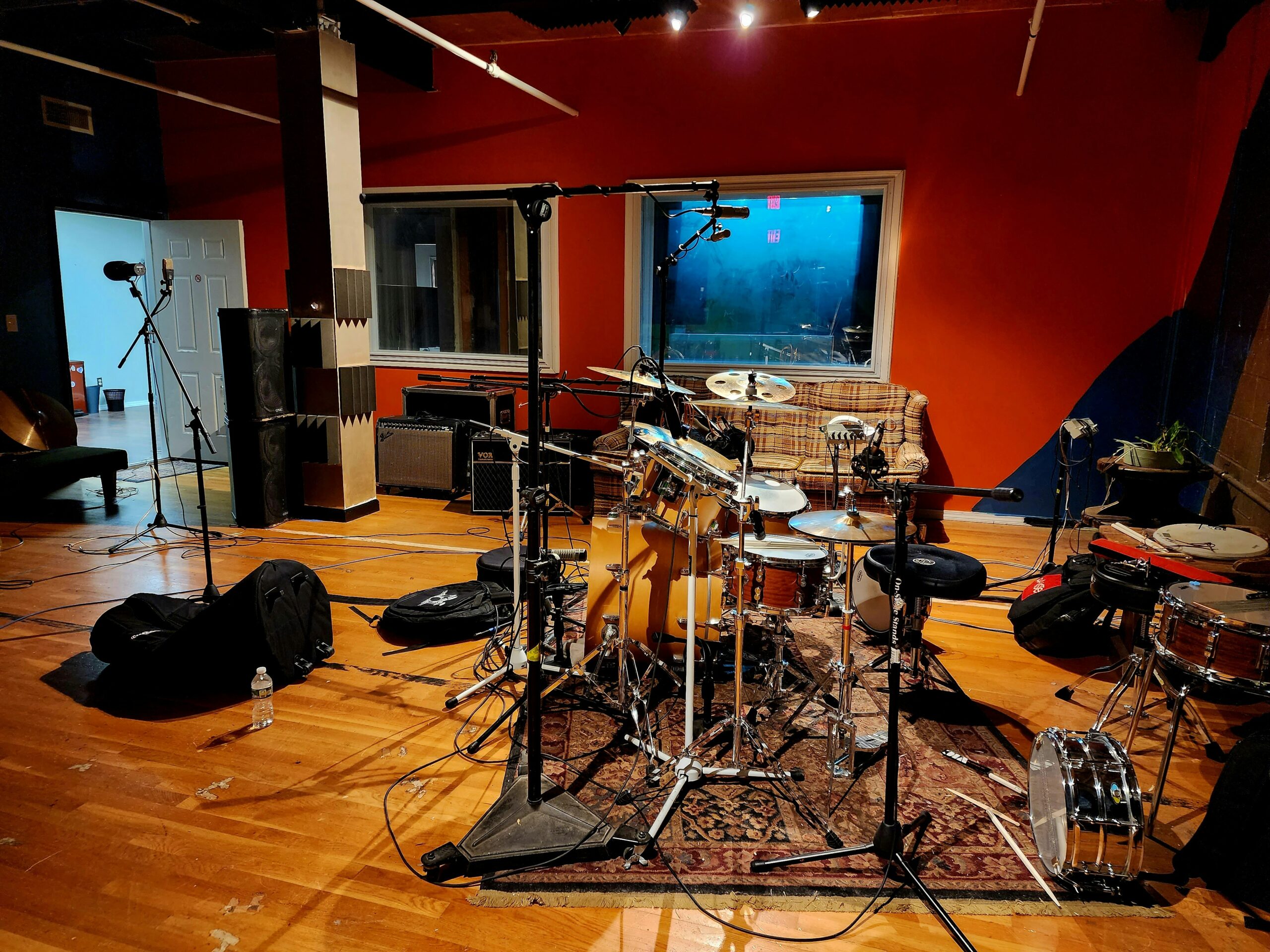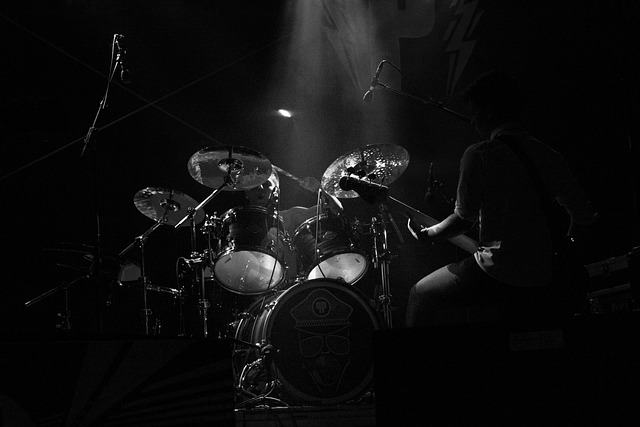
Introduction
In the world of metal music, the thundering rhythm of drums provides an unmistakable heartbeat, driving its raw energy and intensity. However, crafting the perfect drum track is both an art and a science. Enter drums quantising – a technique that brings precision to the chaos without sacrificing passion. Striking the right balance ensures that music retains its soul while achieving meticulous accuracy. In this blog, we’ll delve into practical ways to achieve this harmony, ensuring your tracks resonate with both technical brilliance and emotional depth.
Understanding Drums Quantising
 Image courtesy: Pixabay
Image courtesy: Pixabay
Definition and Importance in Metal Music
Drums quantising, at its core, is the process of aligning drum sounds to a grid, ensuring that each beat falls precisely on time. In metal music, where speed and complexity are trademarks, the precision offered by quantising can be a game-changer. With rapid double bass patterns and intricately syncopated rhythms, maintaining tight timing is crucial. Quantising enables these elements to come together seamlessly, delivering the punch and clarity that metal fans crave. It’s not just about correcting human error; it’s about enhancing the overall impact of the performance, ensuring that every note serves the song’s intensity and drive.
Common Misconceptions
Despite its importance, drums quantising in metal is often misunderstood. One common misconception is that quantising kills the natural feel of the drums, turning them mechanical and lifeless. This is not inherently true. With careful application, quantising can preserve and even enhance the energy and expressiveness of a performance. Another myth is that quantising is only necessary for drummers who lack technical skill. In reality, even the most seasoned drummers can benefit from thoughtful quantising. This process allows them to focus on the emotional delivery of their performance, knowing that the technical aspects are precisely taken care of.
The Role of Precision in Drums Quantising
Tools and Software for Quantising
The world of audio production offers a myriad of tools to facilitate effective drums quantising. Popular digital audio workstations (DAWs) like Logic Pro, Ableton Live, and Pro Tools all boast robust quantising features that allow producers to tweak drum tracks with precision. Plugins such as Superior Drummer or GGD Drums provide options to seamlessly integrate virtual drum kits that can be quantised effortlessly. These tools are not only about shifting notes but offer nuanced control over swing, groove, and velocity, thereby ensuring that the quantising process enhances the musicality rather than detracting from it.
Selecting the right tools is essential. Here’s a brief look at some options:
– Logic Pro X: Offers a flexible quantise function with options to retain the original groove. Our tool of choice!
– Ableton Live: Known for its intuitive interface, allowing real-time quantising adjustments.
– Pro Tools: Features Elastic Audio, which is perfect for more detailed rhythm editing.
– Cubase: Offers Quantize Panel with advanced options for working on detailed drum tracks.
These tools equip producers with the power to tailor the quantising process to suit the unique dynamics of metal music.
The Process of Quantising: Step by Step
Quantising drum tracks is a step-by-step process that calls for attention to detail at each stage. Here’s a breakdown to guide you:
1. Preparation: Begin by recording the drum track, ensuring it’s captured with quality microphones and at an appropriate level. Noise and bleed at this stage can complicate quantising. Make sure that especially the Kick and Snare Drums do not have a ton of Cymbal bleed on them.
2. Identify Problem Areas: Listen through the track and note sections where timing issues occur. This will help in focal adjustments rather than blanket changes across the track.
3. Select Your Grid: Choose the right grid for quantising. Metal drums often require high precision, so 16th or 32nd note grids are common choices.
4. Apply Initial Quantising: Use your DAW specific tools (e.g. Groove Agent in Pro Tools or Flex Time in Logic) to snap drum hits to the selected grid. This is usually a ‘broad brush’ approach to get everything roughly in sync.
5. Micro-Adjustments: After the initial quantise, spend time making fine-tuned adjustments. Listen critically to ensure the music retains its natural energy. Apply crossfades to avoid cracks and pops.
6. Humanization: Counter any mechanical sound introduced by quantising by applying humanization settings. Slightly altering velocities or randomizing positions can create a more organic feel. Sometimes shifting whole sections instead of chopping them up is the best choice.
7. Review and Refine: Finally, listen to how the quantised drums sit in the mix. Make any additional tweaks to integrate them seamlessly within the song.
This step-by-step process ensures that the drums not only remain tight and powerful but continue to convey the passion and intention behind the performance.
Balancing Precision with Speed in Metal
In metal music, the interplay between precision and speed is crucial. Drummers often push technical boundaries with intense double kicks and lightning-fast rolls, where each note must be crisply defined without sacrificing velocity. Quantising aids this by allowing for precise control over timing, ensuring that speed does not descend into audio chaos.
Here’s how to maintain the balance:
– Prioritize Groove: While precision is vital, maintaining the song’s groove is paramount. Allow some micro-shifts in timing where needed to preserve natural swing.
– Dynamic Control: Pay attention to dynamic levels. Use velocity layers to ensure that faster passages are not only tight but also dynamically expressive.
– Iterative Listening: Regularly step back and listen to the quantised drums in context. Sometimes, a slight human imperfection can add character that technology cannot replicate.
The pulse of metal music thrives on a razor’s edge between discipline and release. By effectively balancing precision with the genre’s inherent speed, quantising becomes an ally in delivering a performance that resonates with fierce intensity and unyielding passion.
In conclusion, mastering the art of drums quantising requires an understanding of both its technical aspects and its nuanced role in metal music. Embrace the tools and process wholeheartedly to ensure that your drum tracks not only meet the exacting demands of precision but also embody the relentless spirit of metal. Ready to take your drum tracks to the next level? Dive into quantising with confidence and watch your tracks soar.
The Importance of Dynamics in Metal Drumming
Dynamics play a pivotal role in metal drumming, serving as the pulse that drives the music forward. Achieving a dynamic range that feels authentic and expressive is crucial.
– Emphasize Articulation: Pay attention to the articulation of each drum hit. Metal often involves complex patterns and rapid tempos, and it’s important that every snare, kick, and cymbal is delivered with clarity and intent. But not every hit should have the same velocity.
– Control with Compression: While compression is necessary to tame the peaks, over-compression can dull the excitement. Allow room for dynamic range to ensure each section hits with the intended impact.
– Expression Through Velocity: Varying drum hit velocities can bring a track to life. Encourage drummers to explore softer strokes alongside powerful hits to convey emotion and intensity. Easily put: everything at 100% all the time is boring.
Everybody does it. Yes, even your favourite heroes!
Looking at successful examples can provide valuable insights. Let’s take Gojira’s Mario Duplantier for example, known for his precise yet super passionate drumming. In their production process, they leverage technology judiciously, like click tracks and triggers, and yes, also quantising select elements.
Another exemplar is Mastodon, who achieve dynamic authenticity by emphasizing the drummer’s unique style and incorporating subtle humanisation techniques during mixing. These bands illustrate that with careful attention to detail and strategic use of quantisation, it’s possible to produce metal music that’s both technically refined and emotionally resonant.
In conclusion, successful drum quantisation in metal music requires a fine balance between precision and authenticity. By preserving the performer’s passion and energy, you create a sound that is not only impeccably tight but also richly compelling. If you’re ready to elevate your metal production, consider these insights as your guide and watch your tracks come alive.
Conclusion
In metal music, the art of drums quantising is a delicate dance between precision and emotion. By embracing both the meticulous structure of quantising and the raw intensity of the original drum performance, you create a powerful blend that captivates listeners. Remember the key points:
– Balance is essential: Aim for precise timing without losing the song’s natural feel.
– Communicate with drummers: Ensure their vision aligns with the production.
– Experiment wisely: Sometimes, the best results come from subtle tweaks rather than drastic changes.
By mastering these techniques, you not only enhance your audio production skills but also ensure your metal tracks resonate with the energy and passion they deserve. Let’s continue blending precision with passion, bringing every beat to life. Ready to elevate your sound? Let’s get started on your next metal masterpiece.

